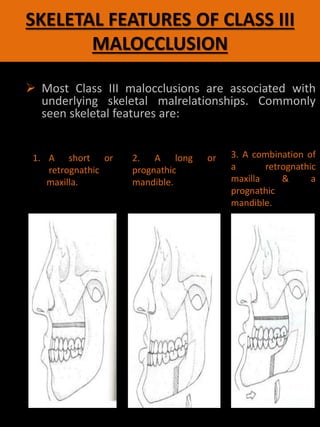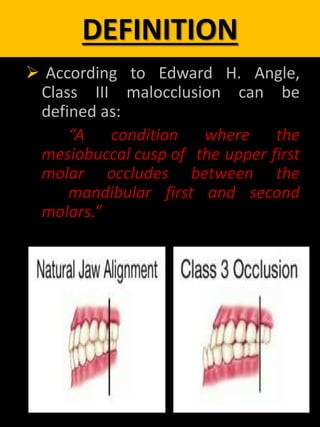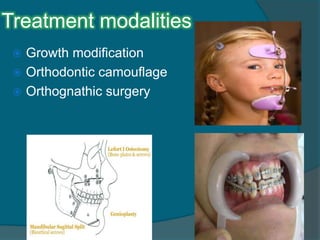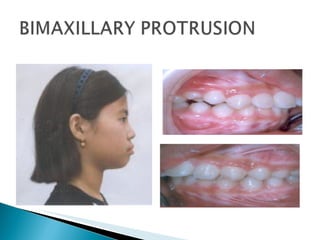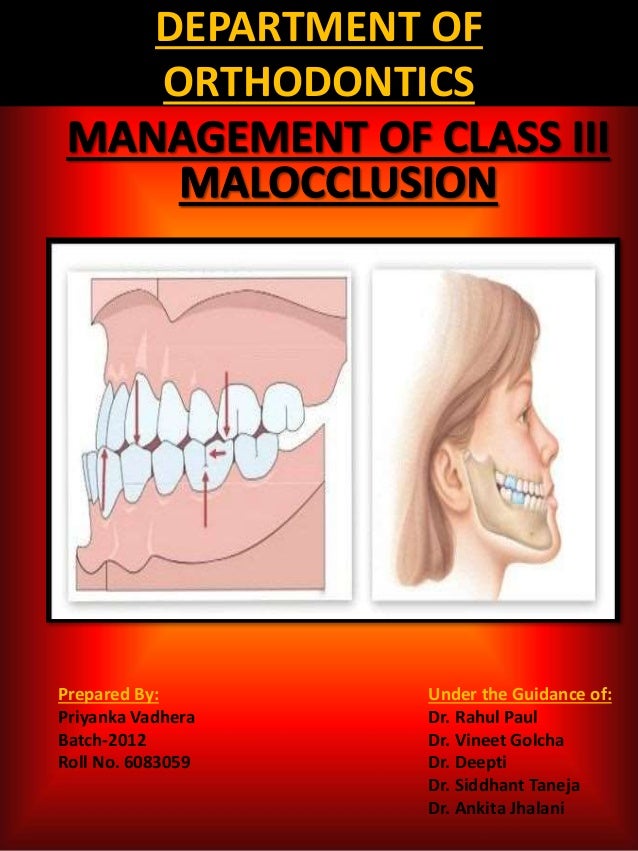class iii malocclusion slideshare
If it does not grow vertically there is an indirect effect on the mandiblewhich then rotates upward and forward as it grows producing an appearance of mandibular prognathism that. The study involved the cephalometric examination of two groups of patients who were considered either adeq.
Pseudo Class III Malocclusion Pseudo class III malocclusion is a habitual established cross bite of all anterior teeth without any skeletal discrepancy resulting from functional forward positioningshift of the mandible on closure.
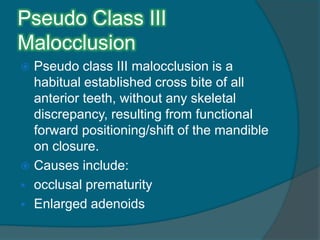
. View Class 3 Malocclusion PPTs online safely and virus-free. CLASS III MALOCCLUSION Presented by. Skeletal dental and soft-tissue changes.
Learn new and interesting things. In Class III malocclusion the overjet is reduced and may be reversed with one or more incisor teeth in lingual crossbite. Prognathism is considered a malformation of eminently genetic causes although its etiology is still multifactorialThus a combination of inheritance and environment can enhance or decrease malocclusion.
A pseudo or functional Class III due to an early interference with the muscular reflex of mandibular closure and b the true Class III. Among the environmental factors involved we can mention oral habits hypertrophy of tonsils or adenoids. Class III A class III intermaxillary relationship means that the lower teeth are shifted forward with regard to the upper teeth.
VTs GROWTH IN PATIENTS WITH CLASS IIIGROWTH IN PATIENTS WITH CLASS III MALOCCLUSIONSMALOCCLUSIONS The craniofacial skeletal pattern of children with ClassThe craniofacial skeletal pattern of children with Class III malocclusion is evident in the early deciduousIII malocclusion is evident in the early deciduous dentitiondentition. Surgical treatment of Class III malocclusion includes in most cases mandibular retrusion maxillary protrusion or a combination of both. Prevalence of class III malocclusion in Caucasians ranges from 08 to 40 and rises up to 1213 in Chinese and Japanese populations while in North Indian population class III malocclusion is found in up to 34 of the population.
Get ideas for your own presentations. Is when the lower incisor edge lies anterior to the cingulum plateau of the upper incisors. Class III malocclusions are considered to be ones of the most difficult problems to treat.
An underbite usually occurs when the jawbone is large or the maxillary bone is short. CAUSES OF PROGNATISM OR CLASS III AND HOW TO DETECT IT. Facial growth modification can be an effective method of resolving skeletal Class III jaw discrepancies in growing children with dentofacial orthopedic appliances including the.
The center of the lower first molar mesiobuccal groove is anterior to. Mandibular clockwise rotation can also provide the same result as mandibular retrusion when increase. Thirty patients average age 124 or - 10 years with skeletal Class III malocclusions who completed comprehensive nonextraction orthodontic treatment were studied.
The mandible and mandibular incisors are then guided anteriorly in central occlusion resulting in an anterior crossbite. If the maxilla is small or positioned posteriorly the effect is direct. 3-5 UK -IN ASIAN POPULATION.
The choice of treatment options of Class III malocclusion depends on the age of the patient the pattern of malocclusion and the severity of malocclusion. Class III Prognathism also known as underbite is a malocclusion caused by the lower teeth being positioned further forward than the upper teeth. Class III malocclusions are the least common type of malocclusion yet they are often more complicated to treat and more likely to require orthognathic surgery for optimal correction.
Their causes are multifactorial and include genetic andor environmental factors. The embrasure between the lower canine and the lower first premolar is shifted forward with regard to the upper canine blue arrows. Dentoskeletal Class III malocclusions are one of the greatest challenges to the orthodontists due to the interaction of both environmental and genetic etiological factors.
Mandibular prognathism MP or skeletal Class III malocclusion with a prognathic mandible is one of the most severe maxillofacial deformities. 13 The prevalence of Class III mal-occlusions is estimated to be 1. Khushbu Agrawal Guided by.
CONTENT INTRODUCTION CLASSIFICATION ETIOLOGY CLINICAL FEATURES DIAGNOSIS TREATMENT 3 3. The etiology of Class III malocclusion is multifactorial with genetic ethnic environmental and habitual components. Class III malocclusions are generally classified into 2 categories.
The purpose of this study was to determine the skeletal dental and soft-tissue changes in response to camouflage Class III treatment. The dental compensation presented in patients with the Class III malocclusion or mandibular prognathism and its importance to the surgical-orthodontic treatment was evaluated in this study. It is where an anterior displacement masking an underlying sk class I base.
10 IN CHILDREN 4. Anterior crossbite with functional shift also called pseudo Class III is a malocclusion in which the incisal edges of one or more maxillary incisors occlude with the incisal edges of the mandibular incisors in centric relationship. Maxillary deficiency Both anteroposterior and vertical maxillary deficiency can contribute to Class III malocclusion.
-Class III incisor. Class III malocclusion is considered to be one of the most difficult and complex orthodontic problems to treat. Class III malocclusion seminar 1.
Skeletal Class III malocclusion can be classified into retruded maxilla protruded mandible or a combination of the two according to cephalometric analysis. 50 Generally as growth is completed there is little or no functional shift of the mandible on closure. Class III malocclusion is one of the most challenging problems confronting the orthodontist 9-11.
Share yours for free. In the early mixed dentition and in older patients with mild skeletal. The following means are the possible treatment choices.
A sample of 69. Class III malocclusions are classified into four types of skeletal and dental relationships with either 1 mandibular protrusion 2 maxillary retrusion 3 a combination of the two or 4 a normal relationship of the jaws. Over the years several interceptive treatments for Class III dentoskeletal malocclusions have been proposed in growing patients.
Clinically Class III malocclusion is in two forms. The diagnosis is important due to the different treatment approaches. Ana Maria Cantor discusses treatment for a patients esthetic challenge.
However adult patients with an anterior crossbite should still check for functional shift CO-CR discrepancy during clinical. 1 The reported incidence of this malocclusion ranges between 1 to 19 with the lowest among the Caucasian populations 23 and the highest among the Asian populations.
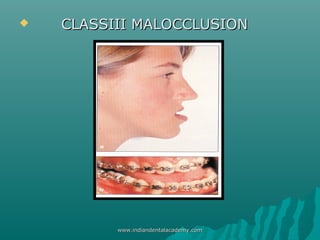
Class Iii Malocclusion Certified Fixed Orthodontic Courses By Indian
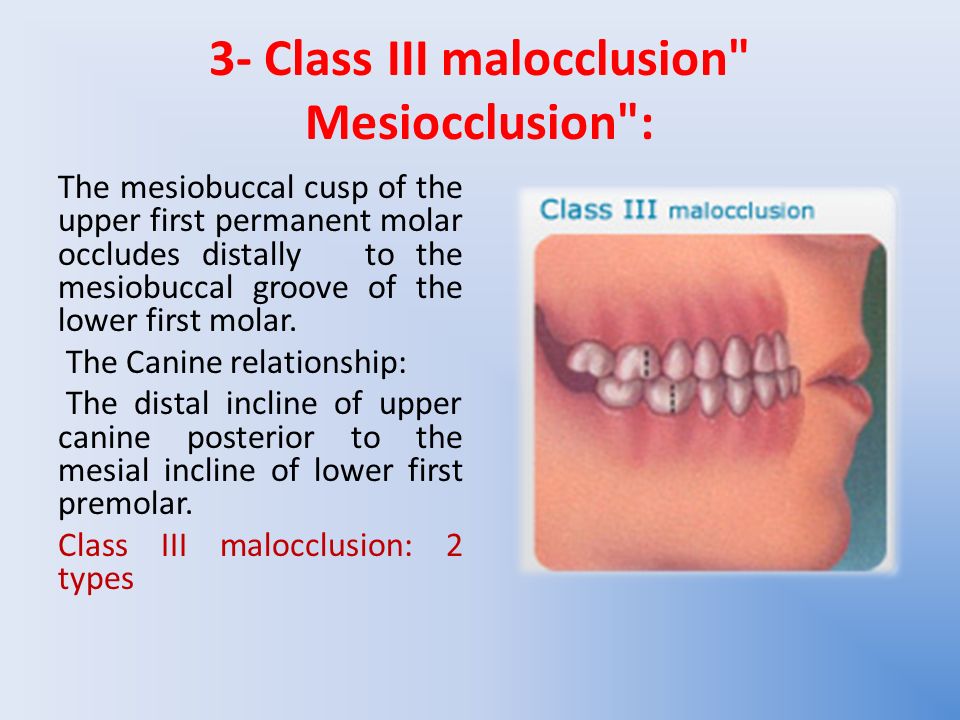
Orthodontic Dr Enas Talb 4th Class Ppt Video Online Download
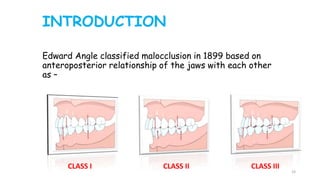
Management Of Class Ii And Iii Malocclusion

Class Iii Malocclusion Ppt Download
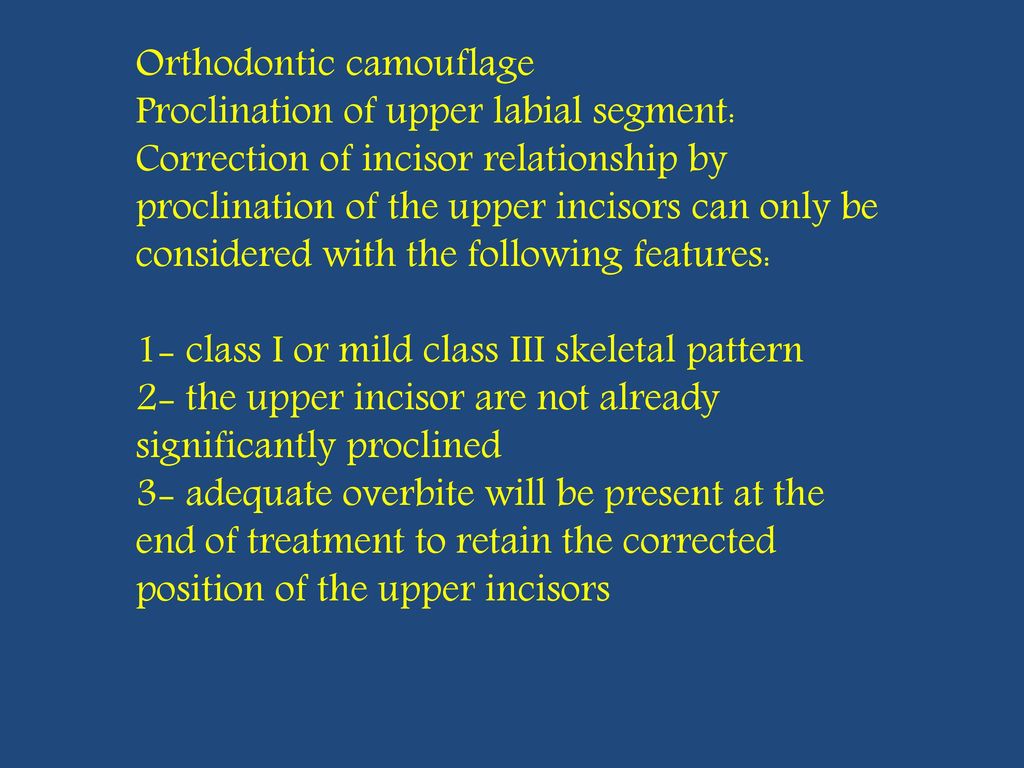
Class Iii Malocclusion Ppt Download

Classification Of Orthodontic Malocclusion Ppt Download
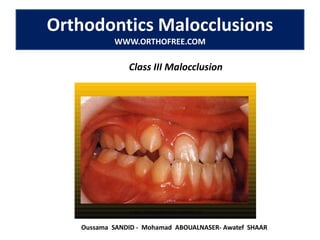
100 Malocclusions Common Orthodontic Problem Mohamad Aboualnaser Awat
